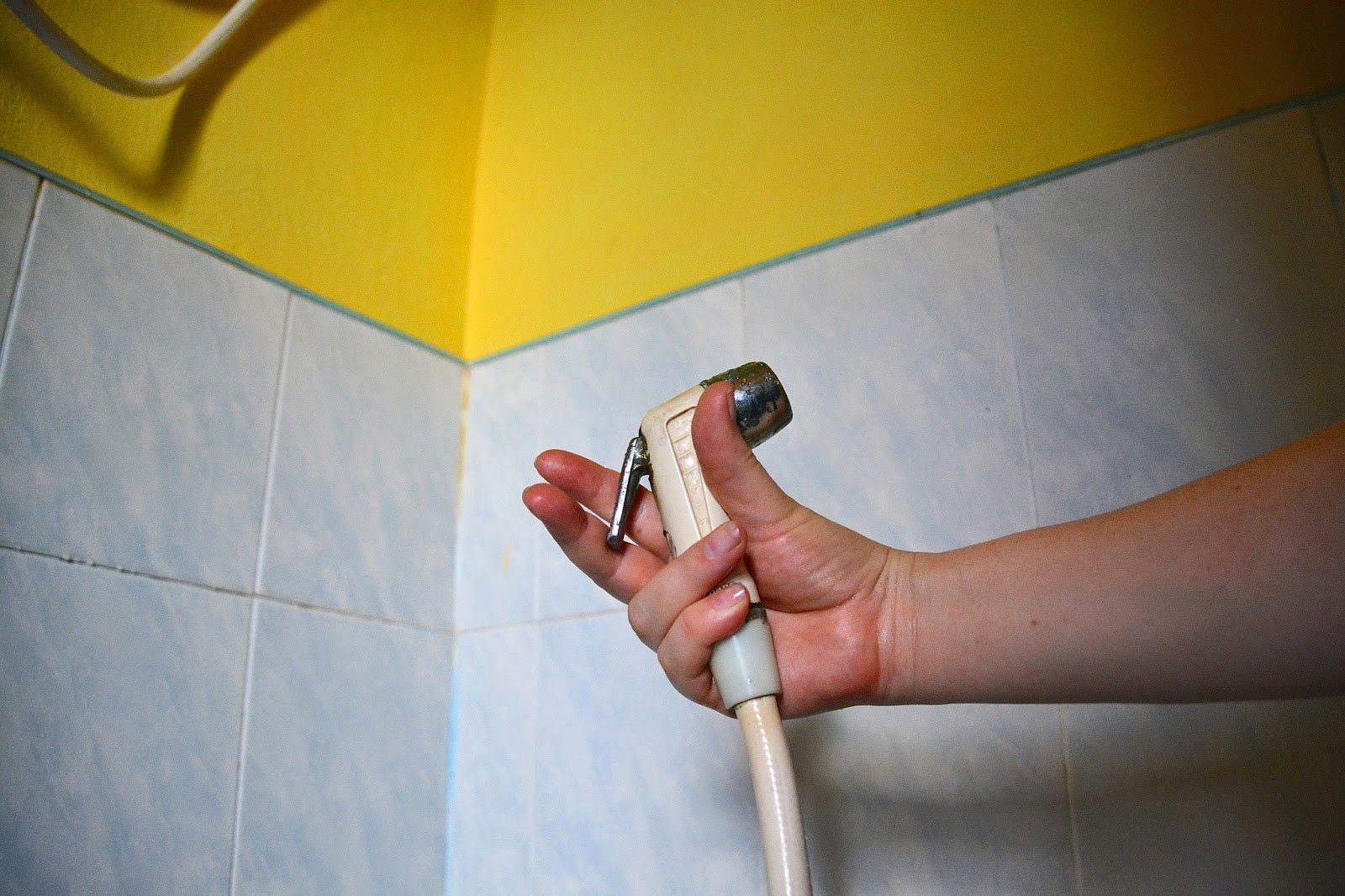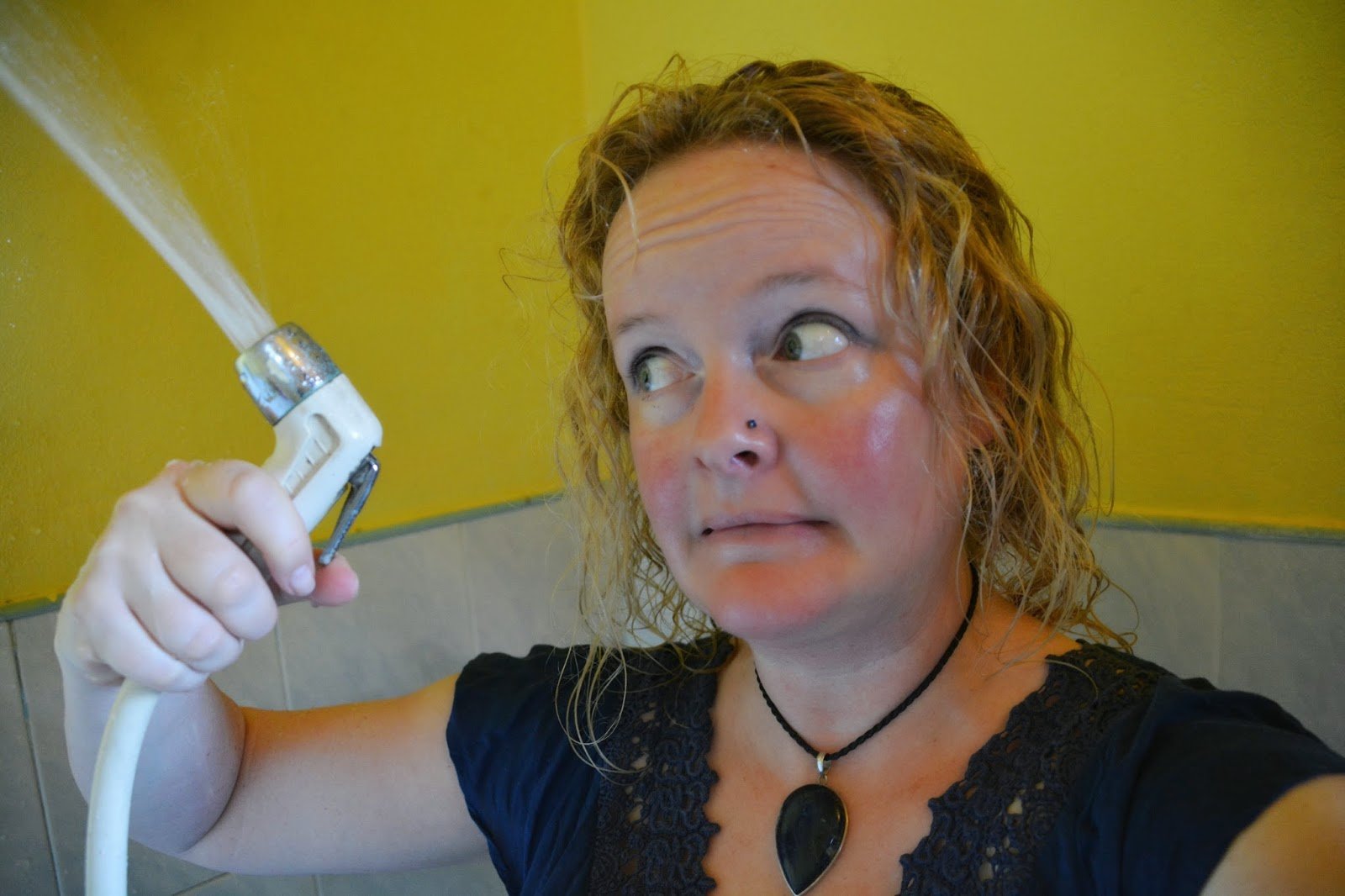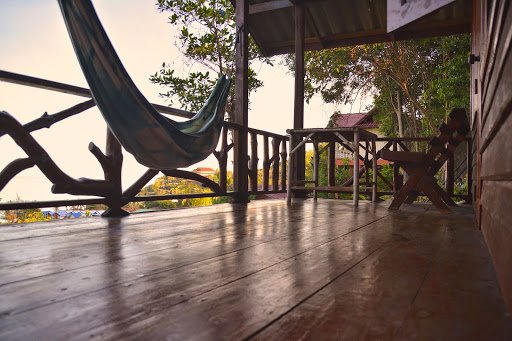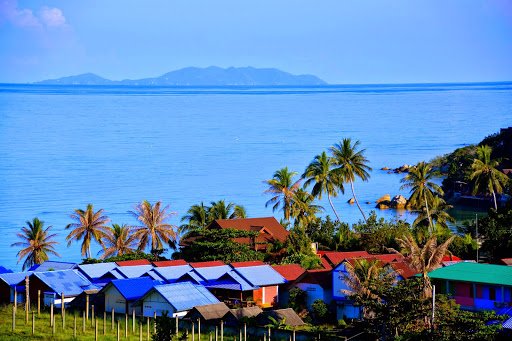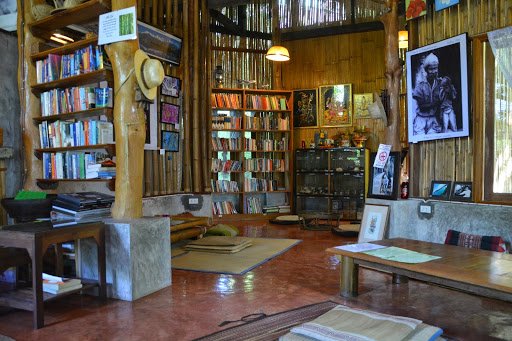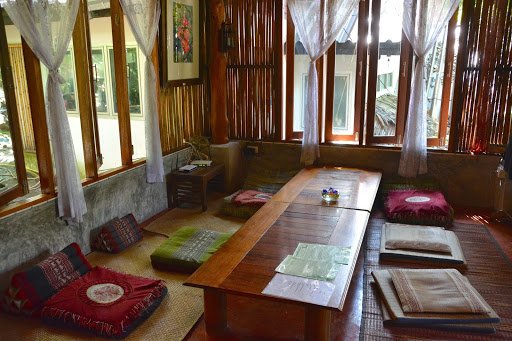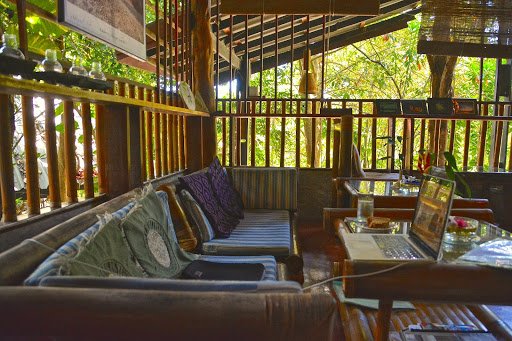 The doors to bathrooms are nearly always closed. This is, I presume, to keep the mould, air, dirt and stench beautifully contained so as to increase the aura and organisms multiplying whilst you are absent, in order to greet you happily and in plenitude at a further time.
The doors to bathrooms are nearly always closed. This is, I presume, to keep the mould, air, dirt and stench beautifully contained so as to increase the aura and organisms multiplying whilst you are absent, in order to greet you happily and in plenitude at a further time.So entering a Thai bathroom, with or without the thongs, you are always greeted to wet floors. The wetness could come from any of the following:
- The shower hose attached to the wall, which is usually positioned in the middle of the room and pointed over the toilet.
- The basin which greets the entry way.
- The bucket of water (large or small) and the smaller container which you use to scoop the water up either to wash yourself or flush the toilet.
- The toilet (which may or may not leak).
- The complimentary toilet hose. The hose is attached to the wall and has a helpful lever that can be pushed easily with a thumb to squirt strong spouts of water in the required areas.
In most tourist hotels and destinations, there are ‘western’ style toilets. This means they have your standard toilet bowl and lid. Often they include a cistern with a press flush on the side. But not always. I am lucky enough to have a western toilet in my bungalow, but there is no flush.
Now let us consider number 5. The toilet hose.
The toilet hose is both a revolution and a disaster for me… In Thailand, and most of Asia, the hose is used instead of toilet paper. People hard water spray themselves, pull up their pants and go about their day.
There are however two major problems. The first is learning how to use the hose. In the first months of travelling in Asia a few years ago I tried to negotiate with the hose. The hose won every. single. time. The damage: water stains up my back, sides and very often everything from the waist down. If I was lucky, I also sprayed my backpack.
Now I’ve spent a decent amount of time in Asia and already being here now for a month, if the truth is to be known, I am actually starting to get used to the dribble, but, only in the privacy of my own bungalow thus far. 🙂
Here’s me, checking out the hose.




